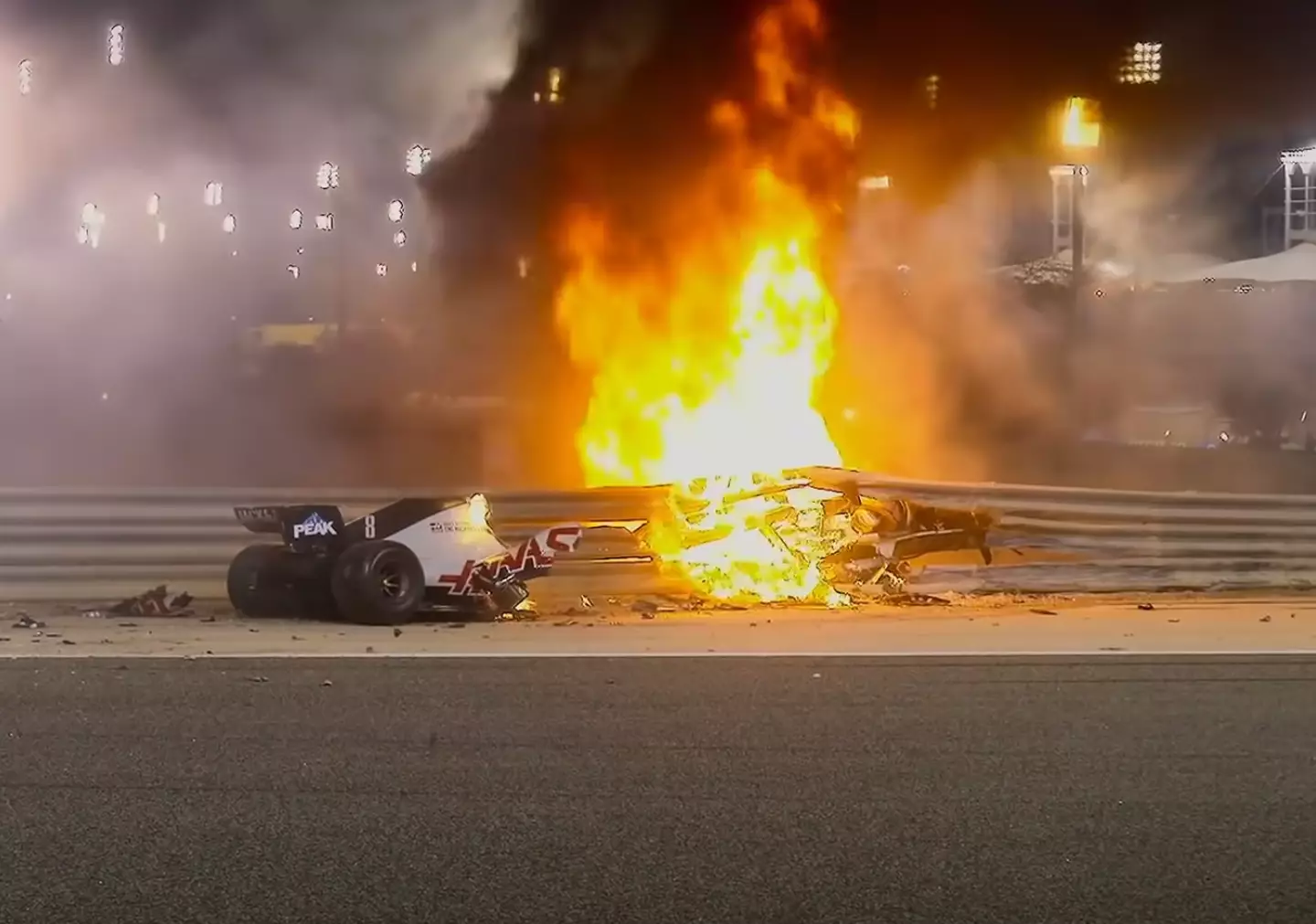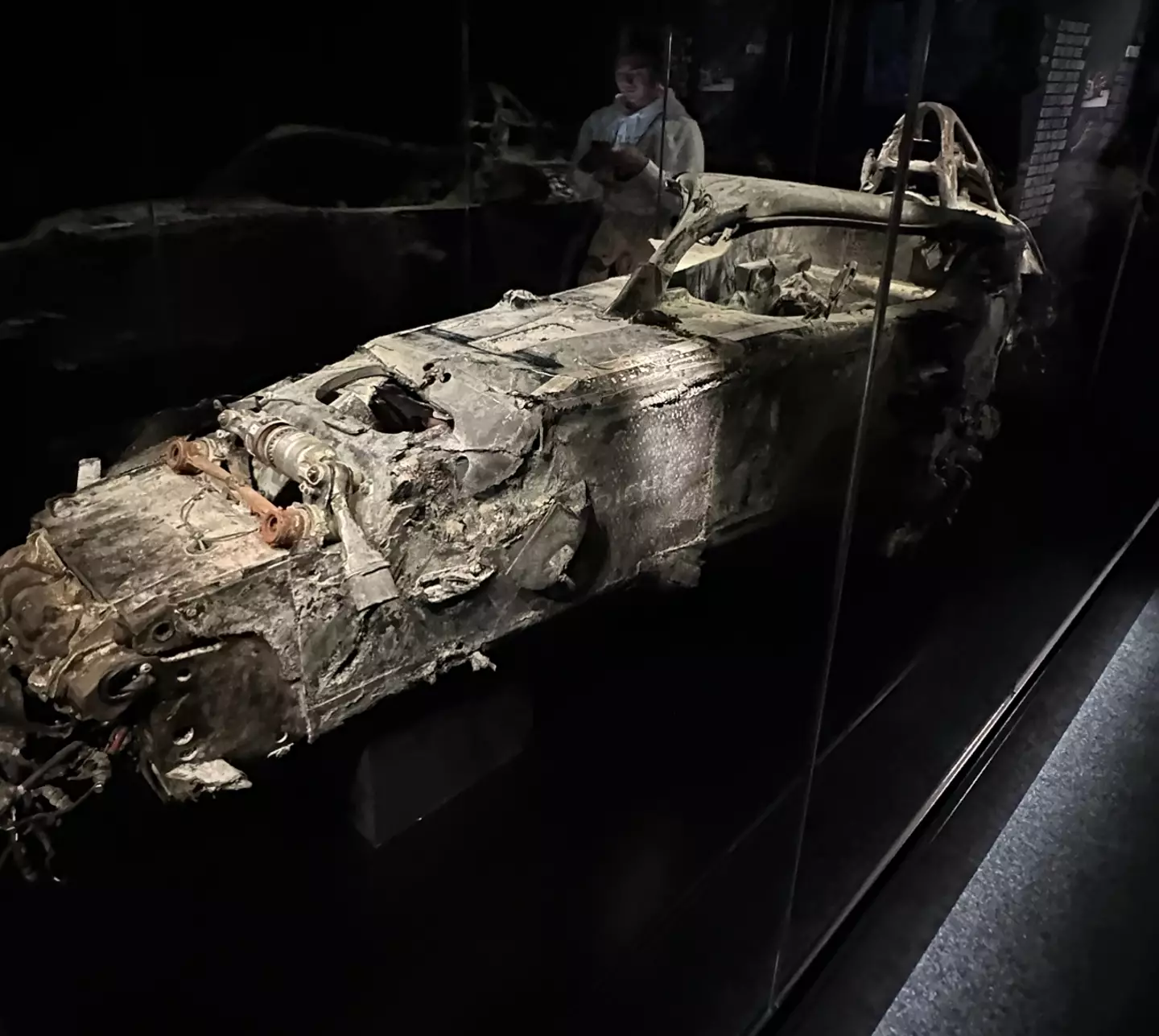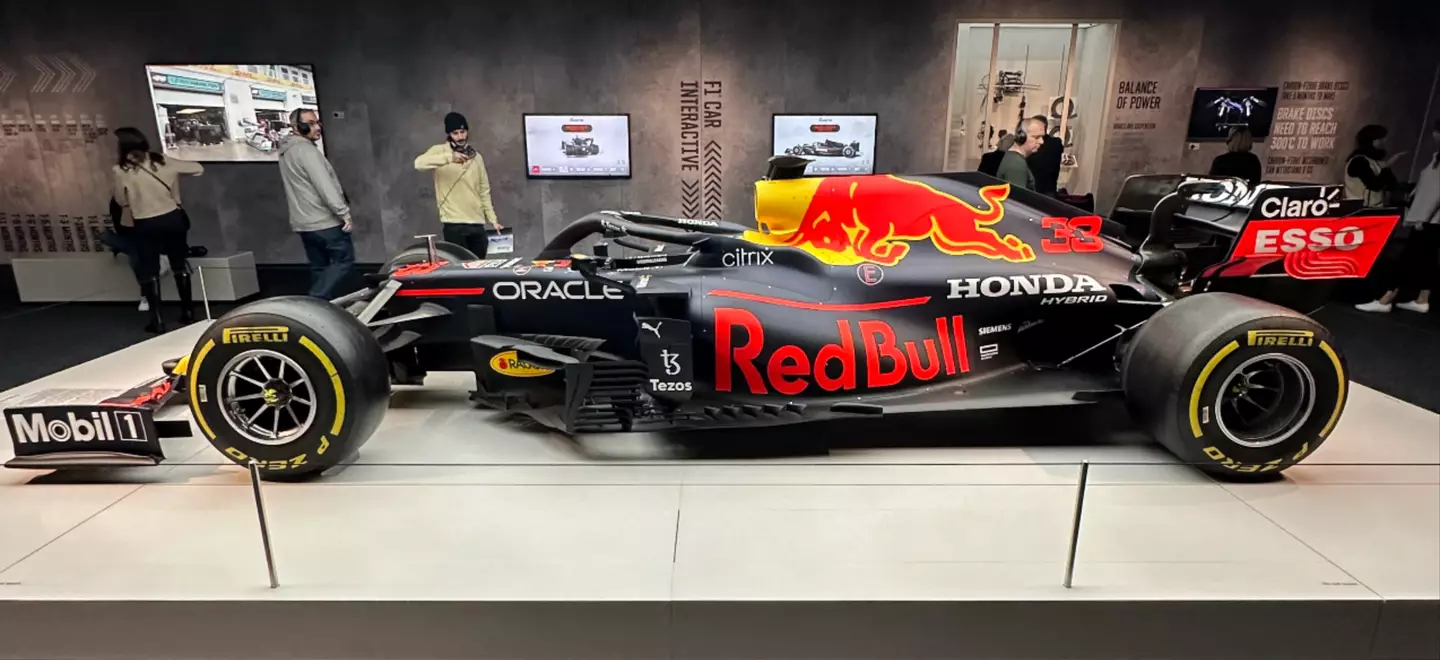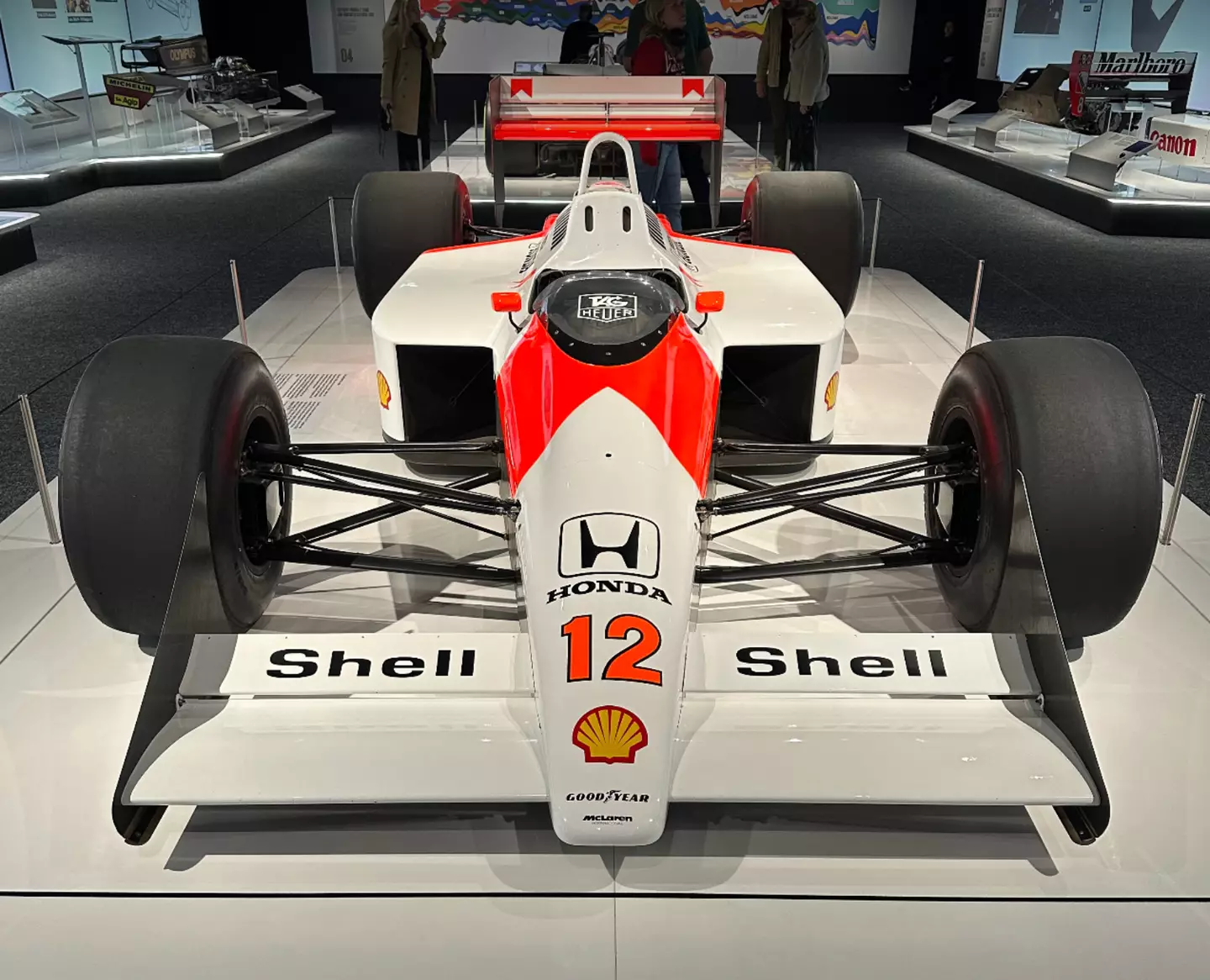The chassis that saved the life of Romain Grosjean is now on display at the F1 Exhibition in London, giving fans to see the incredible piece of history up close and personal four years on.
Back in 2020, Grosjean was involved in one of the most dramatic and horrific crashes in F1 history, as his Haas car was split in half and engulfed in flames following a high-speed collision.
The Frenchman was tagged by Russian driver Daniil Kyvat during the opening lap of the Bahrain Grand Prix which sent his car out of control before going through a metal barrier.
Advert

Grosjean's initial attempt to escape the burning inferno failed due to the barrier above his head, but luckily he was able to maneuver himself to a position to be rescued after around 30 seconds in the cockpit.
Safety in Formula 1 has vastly improved in the last few decades, with the two most recent deaths dating back to Jules Bianchi in 2015 and Ayrton Senna in 1994.
However, Grosjean's crash appeared unsurvivable to terrified onlookers due to the severity of the impact paired with the amount of time he was stuck in the flame-engulfed chassis.
Advert
Grosjean hit the metal barrier at 137mph which split it in two and wedged the chassis in between, with Grosjean absorbing a 67G impact.
For context, an astronaut will only experience around 3G during take-off and re-entry, so how did Grosjean survive?
Firstly, the incredible work of the marshalls and medical car had a huge impact on Grosjean escaping the crash as they risked their own safety attempting to extinguish the blaze, and arrived on the scene almost instantly.
Whilst the incredible strength of the carbon fibre monocoque, alongside the fireproof suit Grosjean was wearing played a massive role, if it wasn't for one key factor Grosjean would likely have been completely decapitated by the collision.
Advert
That key factor was the Halo, the most significant recent safety development which became mandatory in 2018 after it was initially tested in 2016.

The death of Bianchi in 2015, following his accident in 2014 played a major factor in the introduction of the Halo due to it putting the spotlight on cockpit protection.
Bianchi tragically collided with a recovery vehicle after losing control in wet conditions and suffered significant head injuries. Bianchi was placed in an induced coma for nine months before succumbing to his injuries.
Advert
The Halo is essentially a curved titanium bar that can withstand 12 tons of vertical load which is placed directly on top of the driver to protect their crash helmet.
It only weighs around 7kg but is by far the strongest part of the modern-day F1 car and has been credited with saving Grosjean's life.
Grosjean's chassis, well what's left of it, is now on display at ExCel London at the F1 Exhibition alongside some of the sport's most important and prized artifacts.

Advert
The exhibition includes Max Verstappen's 2021 championship-winning Red Bull, Lewis Hamilton’s 2018 record-breaking Mercedes, and Ayrton Senna’s 1988 title-winning McLaren.

There are also countless interactive zones throughout the tour, with visitors getting individual headphones to learn key facts about each exhibit.
The F1 Exhibition originally opened in Madrid, before arriving in Vienna, and Toronto before making the trip to London where it will continue to be open until March 2025.
Topics: Formula 1, Max Verstappen, Lewis Hamilton